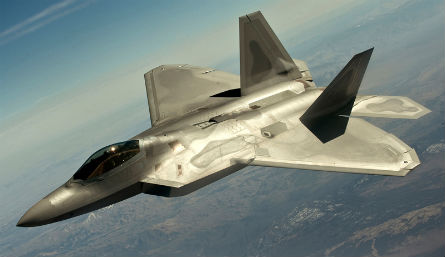The Combat Edge upper pressure-garment worn by US Air Force pilots flying the Lockheed Martin F-22 Raptor might be the cause of the fifth-generation fighter's oxygen maladies, sources say.
While pilots need counter-pressure from the vest-like pressure garment to exhale at low cabin pressures found in the Raptor's cockpit, the Combat Edge and associated breathing systems might be providing too much pressure especially under g-loading.
"It just seems a little weird to breathe of off this thing," one source says. "Because you can't expand your lungs as easily because you have something restricting you."
 |
|---|
©Lockheed Martin |
The extra load imposed on the pilots by the added pressure under g-forces could be causing them to "over-breathe the system".
A compounding factor may be a condition known as acceleration atelectasis. The condition causes the pilot's lungs to have trouble bringing oxygen to the blood system because pure oxygen--93% oxygen in the Raptor's case-- and high gravity loads set up the pilots for a condition where the air sacs in the lungs suffer partial collapse.
The result of acceleration atelectasis is the so called "Raptor cough"-where F-22 pilots have a pronounced cough as the pilot's body attempts to re-inflate the sacs under normal atmospheric pressure on the ground.
Earlier tests would not have caught the problem because the breather device used to test the Combat Edge system does not compensate for pilot's lungs being unable to expand as readily. The breather device always draws the same volume of air.
A lack of ability to test for restricted expansion kept the condition from being seen as a problem. The restricted breathing could lead to hyperventilation symptoms or even bigger issues if the pilot is suffering from acceleration atelectasis.
However, the source says, the pressure-garment problem has been a known concern since at least 2000 when a similar garment provided by Boeing was being flown. But at that time, the USAF did not believe that the extra pressure was a serious concern. Now however, the USAF is starting to believe that the Combat Edge is behind the Raptor's woes. But while current USAF research is pointing to the Combat Edge as the primary culprit behind the F-22's maladies, the source says that it is probably only part of the problem.
Unlike U-2 pilots, who fly only after a several-day rest period after each flight, F-22 pilots will sometimes fly more than once a day. This means that the pilots are flying before they fully recover from the effects of acceleration atelectasis. Thus when they are g-loading in flight, they are further exposed to the pressure from the Combat Edge and their breathing device. The exposure to maximum oxygen while already suffering from acceleration atelectasis means even less oxygen saturation for the pilot. The sum total can result in the "hypoxia-like" physiological symptoms that have been vexing F-22 pilots for the past year.
"It was an annoyance issue, but an annoyance issue after you were on the ground," the source says. "But there is no exposure limit on these guys and early on a double turn was a rarity."
Ironically, some of the safety measures that the USAF added after the service lifted the grounding such as flying with a negative-pressure carbon-filter--which is having oxygen pushed through it under pressure-- and with the oxygen system set on maximum at all times probably exacerbated the problem, the source says.
One possible solution might be the new pressure-garment designed for the Lockheed Martin F-35, which could potentially solve the some of the pressure issues. But F-22 crews may need to take a 24h break between flights, the source says. That would cause a sortie generation problem, however.
Officially, the USAF maintains that it has yet to find the root cause of the oxygen-system problem. "Our risk mitigation and data collection are evolving based on our experience and [Secretary of Defense] guidance. Analysis of the data is getting us closer to identifying a root cause or causes, although we don't have preliminary results or a projected completion date to share at this time," the USAF says.
Meanwhile, pilots flying the F-22 have not suffered any new unexplained hypoxia-like physiological incidents in nearly three months, the service says.
"We haven't had an unexplained physiological incident since 8 March," the USAF says.
Source: Flight International























